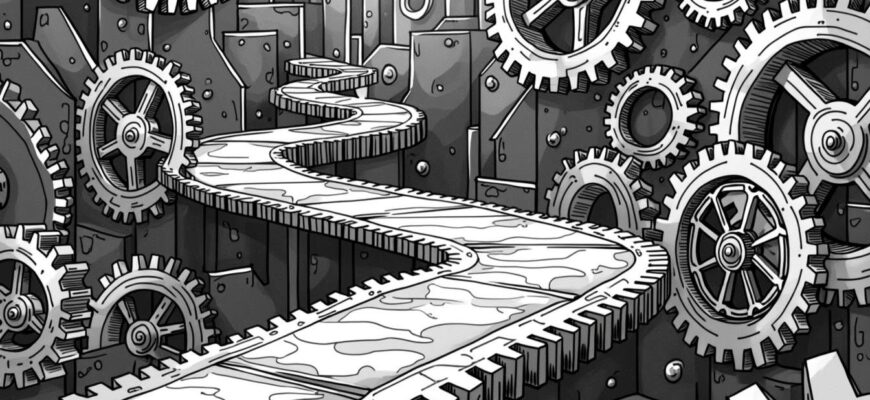- What is Kaspa’s KIP-02 Upgrade and How Does It Impact the Network?
- In what specific ways does DAGKNIGHT enhance network stability and efficiency?
- How Will the Crescendo Hard Fork Affect Block Production and Scalability?
- What challenges might arise from increasing block production to 10 BPS?
- Can Smart Contract Integration Enhance Kaspa’s Mining Profitability?
- What potential benefits do smart contracts present for mining profitability?
- What Are the Risks and Benefits of Transitioning to DAGKNIGHT?
- What specific security vulnerabilities are associated with DAGKNIGHT?
- How Do KRC20 Tokens Compare to ERC20 in Adoption and Valuation?
- What are the distinguishing factors in adoption and valuation between KRC20 and ERC20 tokens?
- Summary
What is Kaspa’s KIP-02 Upgrade and How Does It Impact the Network?
Kaspa’s KIP-02 upgrade signifies a pivotal shift from the GhostDAG protocol to DAGKNIGHT. This transition is intended to bolster the network’s security and speed. By incorporating Byzantine fault tolerance up to 50%, DAGKNIGHT aims to enhance resilience against network disruptions and facilitate parallel transaction processing. In contrast to conventional blockchain models, DAGKNIGHT operates without fixed latency parameters, making it potentially more adaptable.
In what specific ways does DAGKNIGHT enhance network stability and efficiency?
The interconnected block structure of DAGKNIGHT is designed to minimize confirmation delays and boost network responsiveness. This upgrade could position Kaspa more favorably within the blockchain infrastructure landscape.
How Will the Crescendo Hard Fork Affect Block Production and Scalability?
The Crescendo hard fork aspires to ramp up Kaspa’s block production rate from 1 to 10 blocks per second (BPS). This considerable increase in block production is geared towards improving transaction scalability and alleviating congestion problems. Currently undergoing testing in the TN11 phase, the hard fork is slated for an early 2025 launch, allowing for comprehensive testing before its activation on the main network.
What challenges might arise from increasing block production to 10 BPS?
An uptick to 10 BPS could lead to network congestion and a heightened risk of orphaned blocks, which might unsettle network stability. However, if executed judiciously, it could expedite transaction processing and diminish latency, ultimately improving user experience.
Can Smart Contract Integration Enhance Kaspa’s Mining Profitability?
Kaspa’s long-term roadmap anticipates smart contract integration to accommodate decentralized finance (DeFi) applications, dApps, and other programmable assets. The introduction of KRC20 tokens in December 2024 was a preliminary step in establishing a broader smart contract framework. These tokens, akin to Ethereum’s ERC20 standard, lay the groundwork for asset creation and network experimentation.
What potential benefits do smart contracts present for mining profitability?
Integrating smart contracts could augment mining profitability by offering miners fresh incentives and avenues to manipulate transactions or adapt their mining strategies. Yet, it carries risks such as censorship, transaction reversal, and diminished utility for other cryptocurrencies.
What Are the Risks and Benefits of Transitioning to DAGKNIGHT?
Transitioning to DAGKNIGHT introduces various potential risks and rewards. On the one hand, it promises enhanced scalability and throughput via parallel transaction processing. On the other hand, it raises complexity levels and could introduce new attack vectors.
What specific security vulnerabilities are associated with DAGKNIGHT?
The complex nature of DAGs may complicate data integrity maintenance and old data pruning. Furthermore, users could fall prey to social engineering attacks, phishing, and fraud, particularly if they inadvertently share their private keys or recovery phrases with malicious parties.
How Do KRC20 Tokens Compare to ERC20 in Adoption and Valuation?
KRC20 tokens, launched on the Kaspa blockchain, are comparatively new to the more established ERC20 tokens on Ethereum. While ERC20 tokens benefit from a substantial ecosystem, KRC20 tokens are still in their infancy.
What are the distinguishing factors in adoption and valuation between KRC20 and ERC20 tokens?
ERC20 tokens have a significant advantage in adoption due to their extensive history and ecosystem. KRC20 tokens, although rapidly gaining traction, are susceptible to higher volatility and speculative interest. Their unique characteristics, such as high transaction throughput and low fees, may draw more users and investors, possibly stabilizing their valuation over time.
Summary
Kaspa’s 2025 upgrades, including the shift to DAGKNIGHT and the Crescendo hard fork, could redefine blockchain efficiency and scalability. While these changes promise substantial enhancements, they also carry potential risks and challenges. The integration of smart contracts and KRC20 tokens further sharpen Kaspa’s competitive edge, but their long-term effects on mining profitability and network stability remain uncertain. As Kaspa evolves, it will be essential to strike a balance between innovation and security to sustain growth and adoption in the blockchain sphere.








